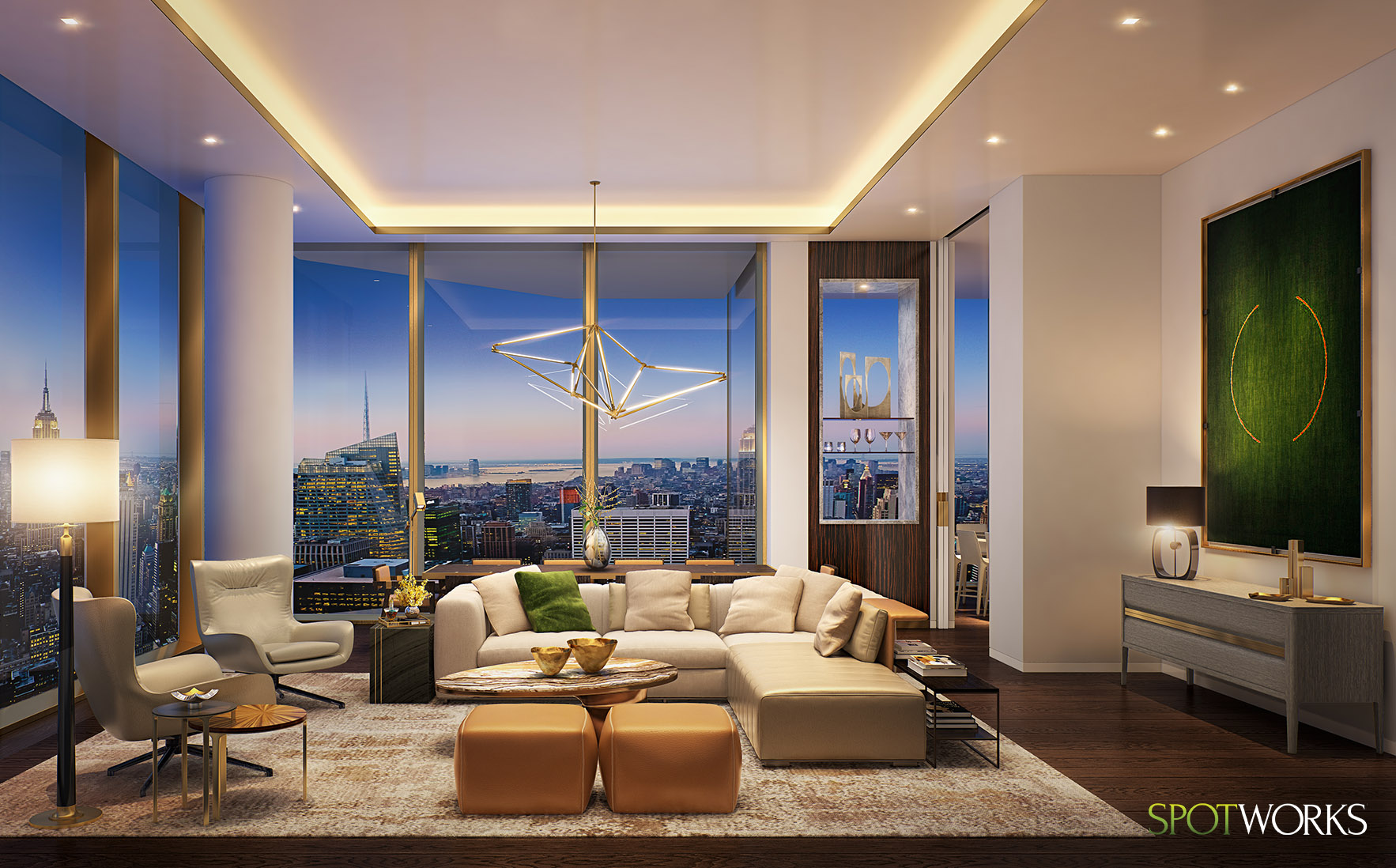How to judge the quality of interior design rendering?
The interior design rendering is becoming the first step for architectural ideas, structural planning, and value engineering. It’s very different when the artist is finishing touches of any building design. Once showing off the plan, the architect will preserve the excellent design and remove the bad one. A lot of architects ignore interior design and treat as an unnecessary service to the ‘real’ plan. However, it indeed presents a different set of skills that need to incorporate and coordinate into the architectural design from the beginning.
Interior design is not like zany accent walls and Feng Shui. Wall color and furniture placement are a part of the equations for sure. For example, we need to consider ideas like space arrangement, lighting and user experience when we design the window. Also, elaboration on every detail will help to strengthen the planning of the design itself.
Moreover, this is the crucial part. The interior design is the tuxedo that will suit the famous actor. It won’t be at odds with the design, material, and spatial cohesiveness presented by the overall building design. It’s the most tedious and vital job for the interior designers. Interior design comes from a deep understanding of the design and decisions were made with good reasons. The architect, interior designer, and the customer should work closely along to create a good product. Finally, this final project which will impress everyone when walking on the red carpet.
So, how precisely will interior design rendering help the architectural design?
The quality of an interior design rendering should judge by how well it can visualize the project. It also determine how good the 3D rendering service is. Here are the four measures to assist you to decide the standard of interior rendering:
Light & Shadow
 The lighting effect needs to look natural. The shadows from lighting need to apply for all objects. Whether or not its deeper directional shadow or shallower contact shadows wherever objects interact adjacent surfaces. It should be clear wherever the most lighting direction is. If you think that it’s already photorealistic, then there shouldn’t be any shadows cast by the light ray that wouldn’t exist at the starting. Many people can’t create a good quality of rendering as they don’t have a good understanding of light and shadow. You need to learn the light source in a picture if it’s in the right place for interior design rendering.
The lighting effect needs to look natural. The shadows from lighting need to apply for all objects. Whether or not its deeper directional shadow or shallower contact shadows wherever objects interact adjacent surfaces. It should be clear wherever the most lighting direction is. If you think that it’s already photorealistic, then there shouldn’t be any shadows cast by the light ray that wouldn’t exist at the starting. Many people can’t create a good quality of rendering as they don’t have a good understanding of light and shadow. You need to learn the light source in a picture if it’s in the right place for interior design rendering.
If your environment or HDRI isn’t enough, please use extra light-weight sources in your scene. Making certain the highlights are emphasizing the form of the object and check out fixing a rim lights to come out the silhouette of the object.
Surface Texture
 Textures are vital when you’re doing photo-realistic money shots for interior design rendering, or movie. The application of the textures is usually the difference between great success or total failure. The detail on the surface is the part that’s going to attract everyone’s attention.
Textures are vital when you’re doing photo-realistic money shots for interior design rendering, or movie. The application of the textures is usually the difference between great success or total failure. The detail on the surface is the part that’s going to attract everyone’s attention.
Textures should look similar to what you are doing for the project. It shouldn’t have a repetition of the material arrangement. It needs to have a random pattern. Good textures selection will help people to see the design and feel it right away. Thus, textures should place on to the proper place wherever it’s realistic in showing people. In short, the more time you spend on creating the textures, the higher the quality you will get.
Detail is Key
 Details are the toughest step in the interior design rendering. Objects in the rendering image should look similar to the reality. The very first thing that people will check is that objects within the style will never merge. You should observe carefully within the small detail of every object.
Details are the toughest step in the interior design rendering. Objects in the rendering image should look similar to the reality. The very first thing that people will check is that objects within the style will never merge. You should observe carefully within the small detail of every object.
Don’t ignore the beveling edges within the modeling stage. Even the sharpest edge in the real world isn’t that sharp. Adding a delicate angle, particularly on refractive parts like a light-weight diffuser, can catch a pleasant, realistic light-weight reflection.
Mood
The mood of interior design rendering highlights the positive attitude of the project. The rendered image should inspire the viewer’s imagination. When the viewer gets to feel as if the structure stands magnificently ahead of him, the better it is.

How can we understand interior design rendering better with the client?
It all starts with an understanding of the consumer plans’ fresh ideas. Once these basic ideas grasped and developed, it comes right down to lighting, texture, color, and placement of the design. Materiality responds to lighting and vice versa. Therefore, these aspects should all balance on paper before you start everything. Interior design rendering and 3D visualization have had a significant impact within the past decade. We usually plan an area before the actual plan executed. This step is significant to the success of an interior design job and establishes a feedback loop. We need to keep updating to the consumer and builds trust among us.
Trust ends up in a completed project everybody will satisfy. The interior design rendering puts the finishing touches on a piece of design. It may have a significant effect on how the areas feel, look, and presented. If you skimp on this part in the process, you would possibly find yourself wasting time in doing the job. The project ends up in confusion with the client and affects the rest of the structure. A good interior rendering can help architect in the early stage to avoid mistake.
Interior design rendering is a crucial stepping stone to a cohesive, finished beaux-arts design. If it isn’t planned carefully, it will have a devastating impact on how the project viewed and used. It should be a step to enhance a good project. Furthermore, you can check the good interior design rendering video here.






